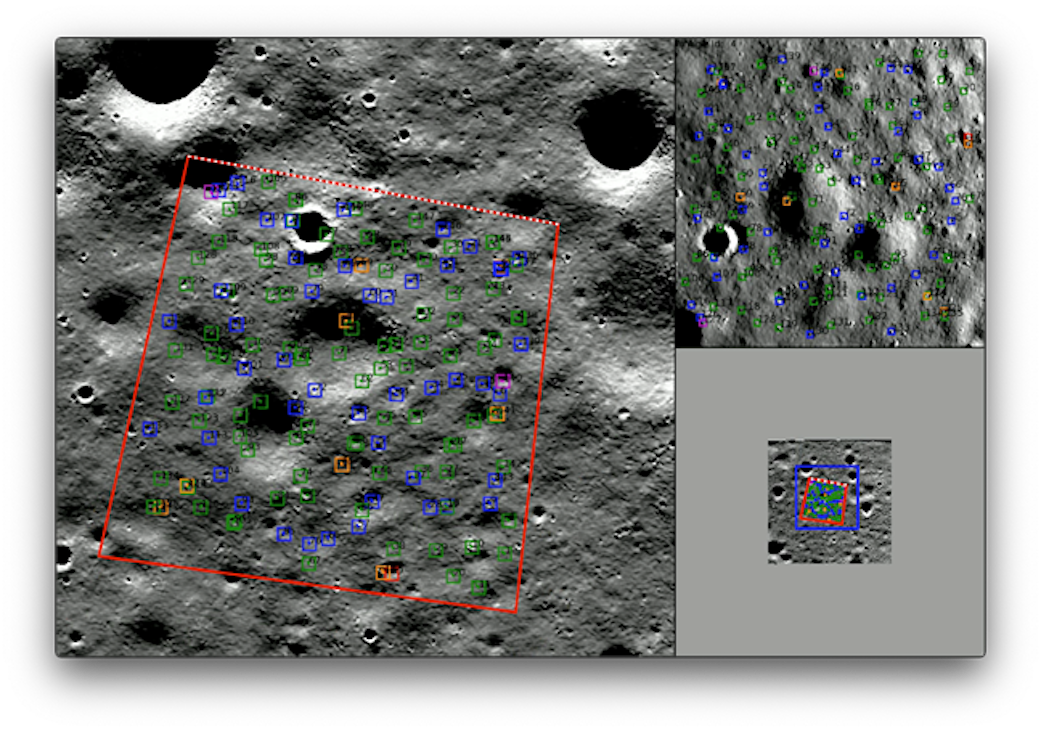NASA is working with commercial companies to advance navigation and landing capabilities for future missions to the Moon.
Engineers recently tested NASA-developed navigation software with a navigation system developed by Blue Origin of Kent, Washington. During the testing, engineers ran a live simulation of a landing at the Moon’s South Pole. The NASA software successfully integrated with Blue Origin’s lunar navigation system, called BlueNav-L.
The test demonstrated the ability to process images to identify geographical features of the simulated lunar surface in real time. This, in turn, enabled the system to provide an accurate estimate of the simulated lander’s position.
“During the demonstration, we saw a significant performance improvement on the state-of-the-art technology for future space landers,” said Kevin Somervill, an engineer at NASA’s Langley Research Center in Hampton, Virginia.
The simulation incorporated navigation algorithms adapted from the Lander Vision System (LVS) developed at NASA’s Jet Propulsion Laboratory in Southern California. LVS is a sensor system used to determine where to land between hazards identified from orbital data prior to landing. LVS works together with a computer, other landing sensor systems, and advanced algorithms to accurately compute the spacecraft’s positions (with respect to an onboard map) and safely touch down in a desired area. The technology, which is akin to the system NASA’s Perseverance rover will use to land on Mars on Feb. 18, 2021, could land spacecraft precisely on the Moon or another planet in the future.
The test was part of a NASA Tipping Point partnership with Blue Origin to mature precision lunar landing technologies. In October 2020, NASA tested two precision landing sensor systems, advanced algorithms, and a new computer on Blue Origin’s New Shepard rocket under the same partnership.
“What we’re trying to do is transfer experiential knowledge – both using NASA-developed technologies and learning on both sides – the potential improvements, limitations, and benefits of these technologies,” Somervill added.
Blue Origin is working with JPL to map out and advance the next steps to integrate this LVS with the company’s navigation system for potential use on their lunar lander, called Blue Moon.



























